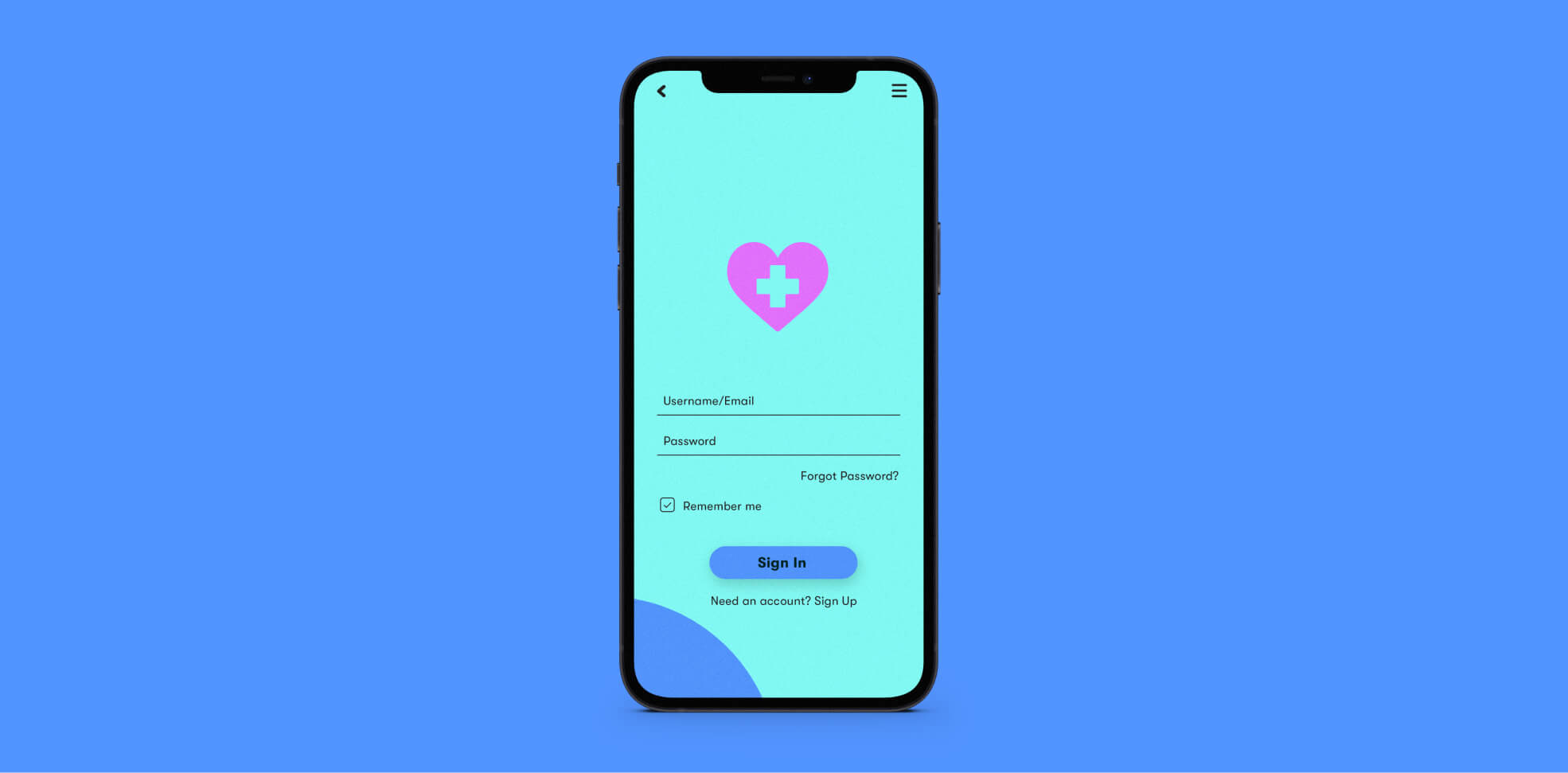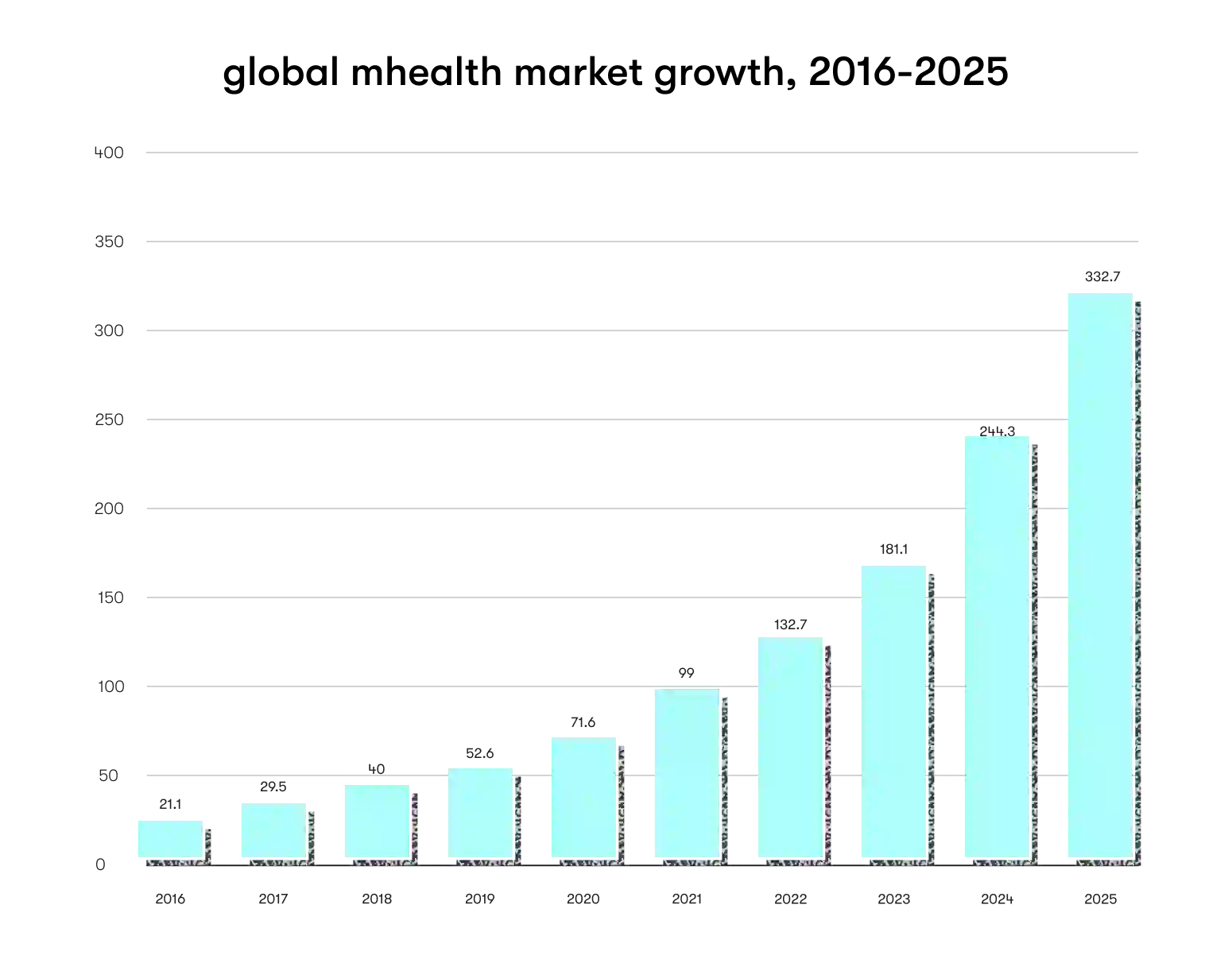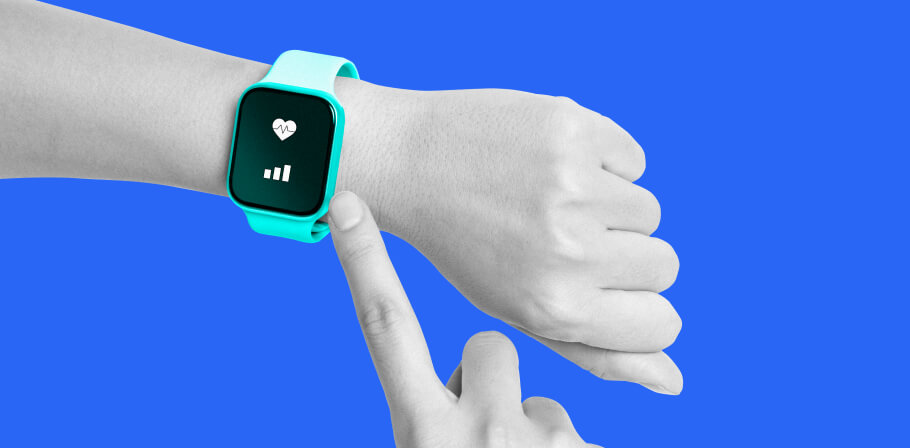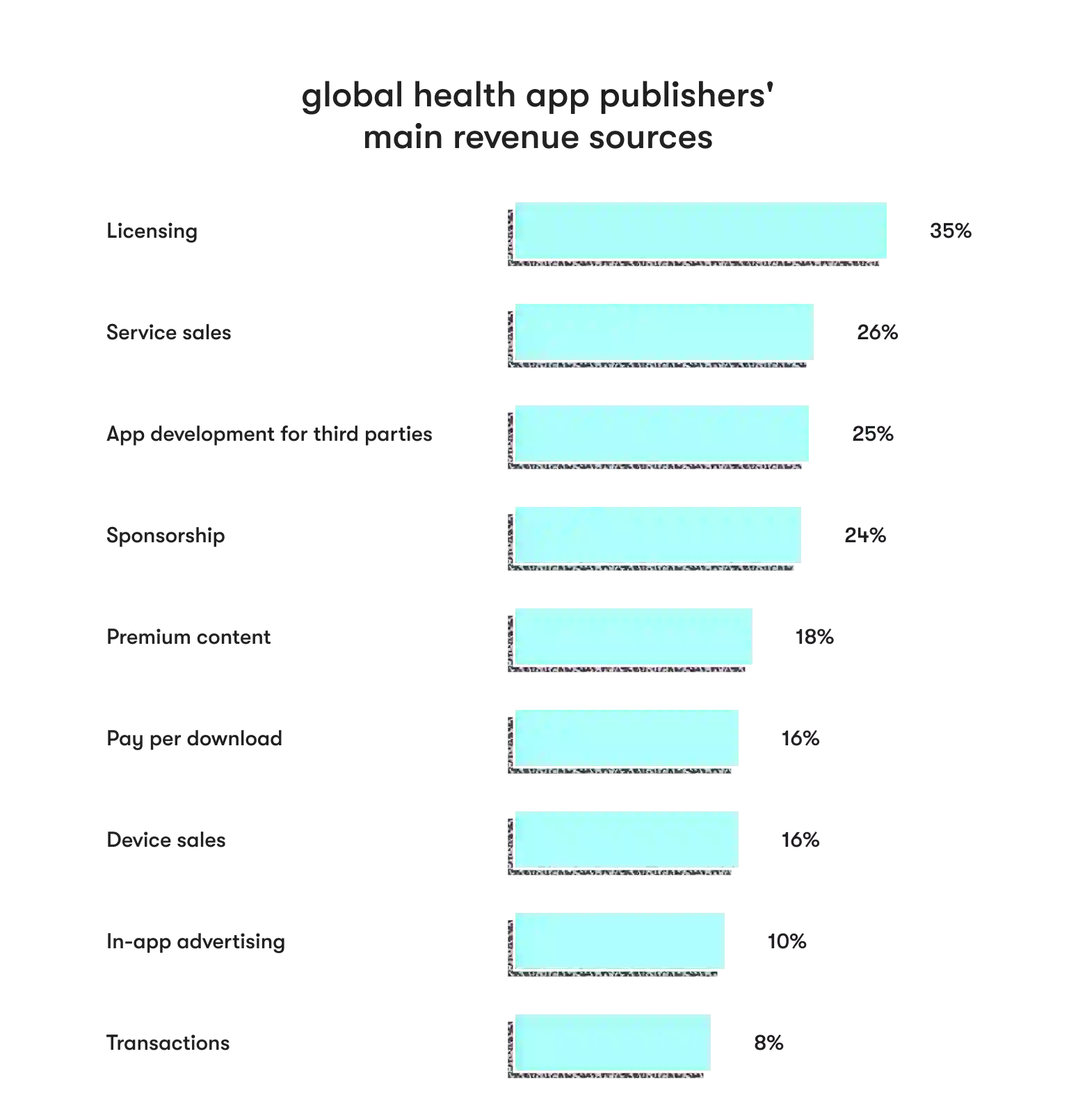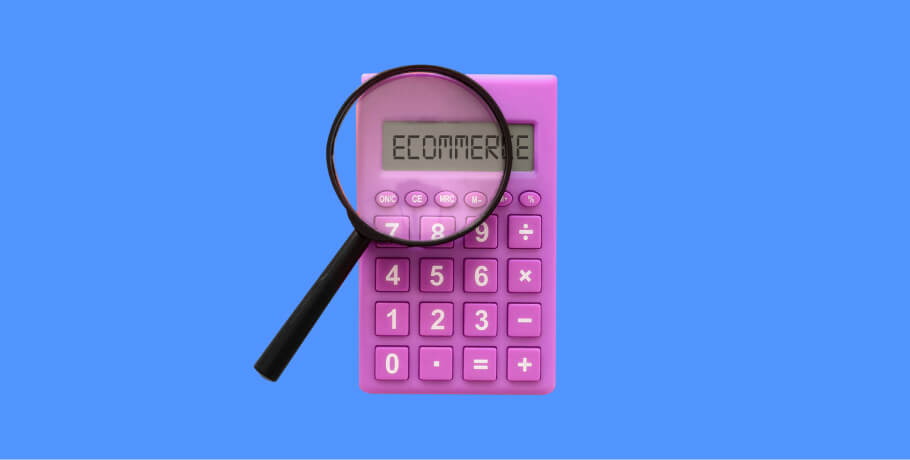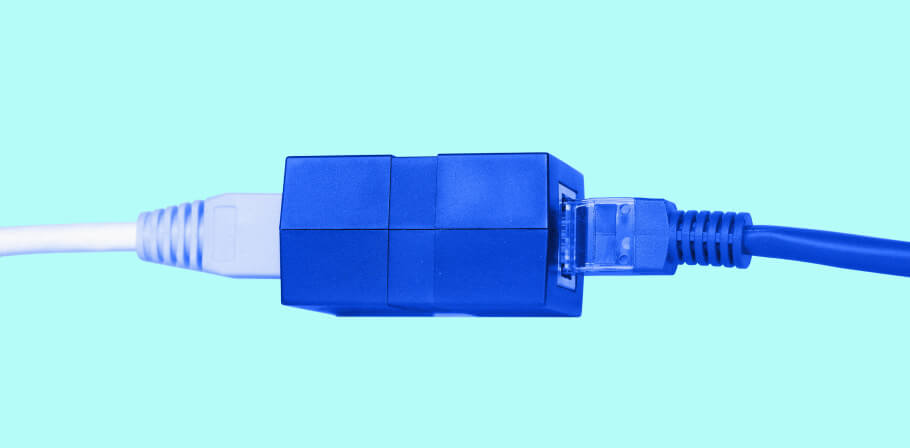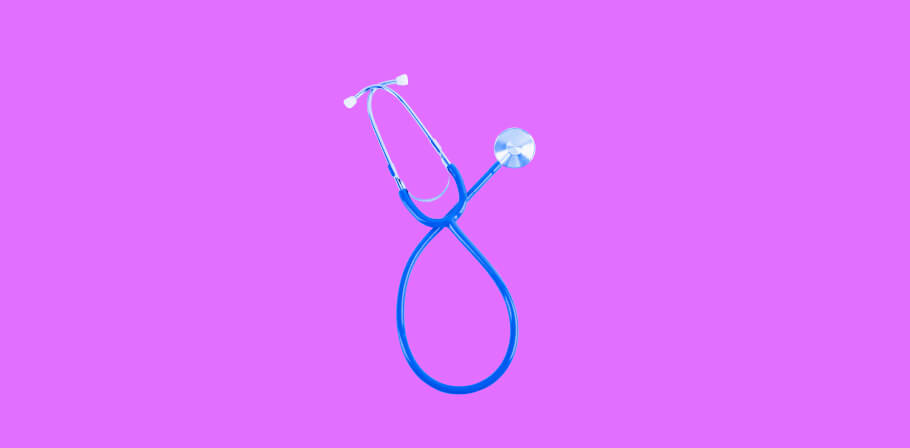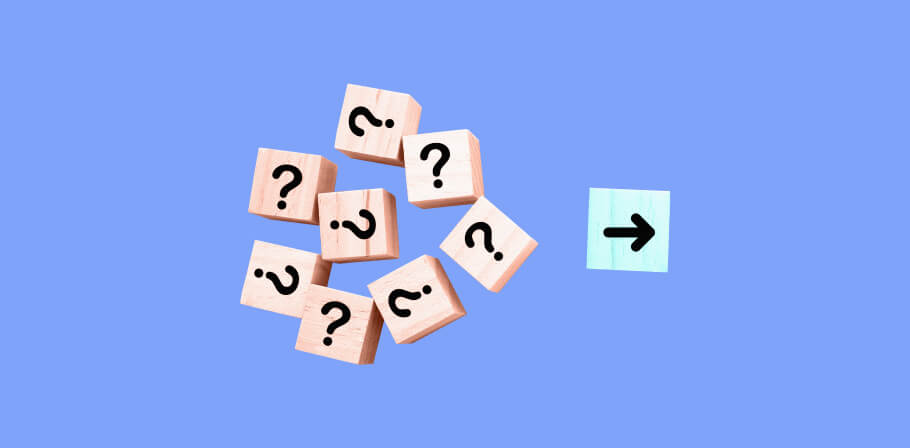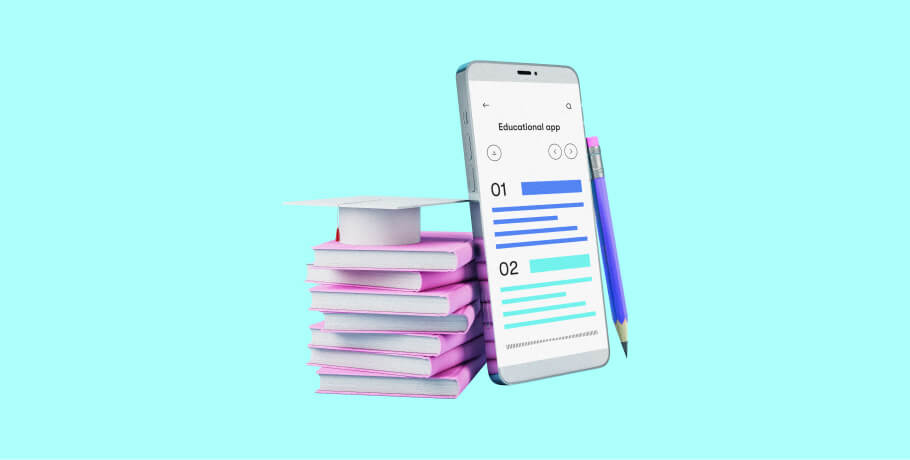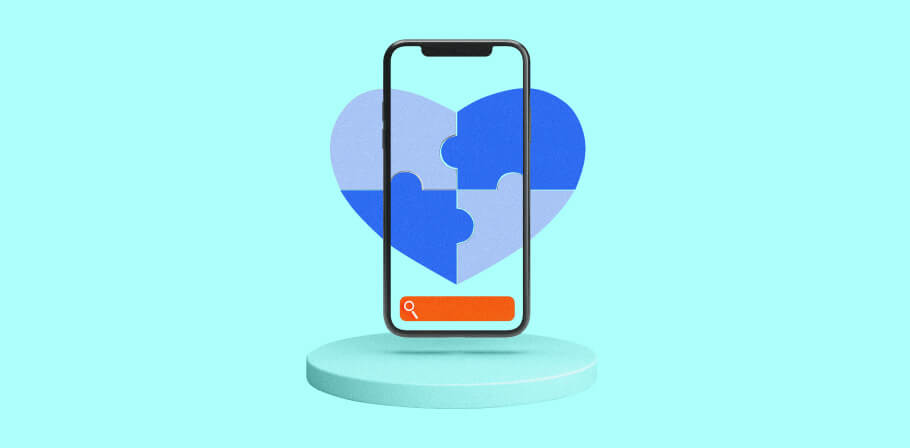The digitization of the medical industry makes healthcare more accessible and affordable to the general population, especially to underprivileged parts of the world. The current pandemic made the need for medical technology more urgent and apparent and helped the market to grow and expand to meet the demand. Healthcare applications connect physicians and patients and offer smooth and simple communication channels. While the technology allows doctors to be more precise in their diagnosing and treatments, patients can receive professional medical help right from their homes. However, building a medical app involves a lot of technical and legal expertise, as well as thorough planning and seasoned human resources.
In this article, we will go through various types of healthcare apps, how they can benefit both physicians and patients, discuss the most important features and monetization plans as well as take a look at the ultimate guide to healthcare app development and the costs.
mHealth App Market Trends, Opportunities, and Forecasts
The mHealth market has been rapidly growing since the pandemic and was valued at $99 billion in 2021. According to the projections, it will be worth $332.7 billion by 2025 and will continue to expand in the future. For example, devices for remote patient monitoring can improve the patient-doctor relationship and ensure a better health care experience. IoT health wearables can collect data from patients in real-time, allowing clinicians to track their vital signs. If a doctor notices an abnormality in the patient’s condition, they can immediately act on it and change the treatment plan.
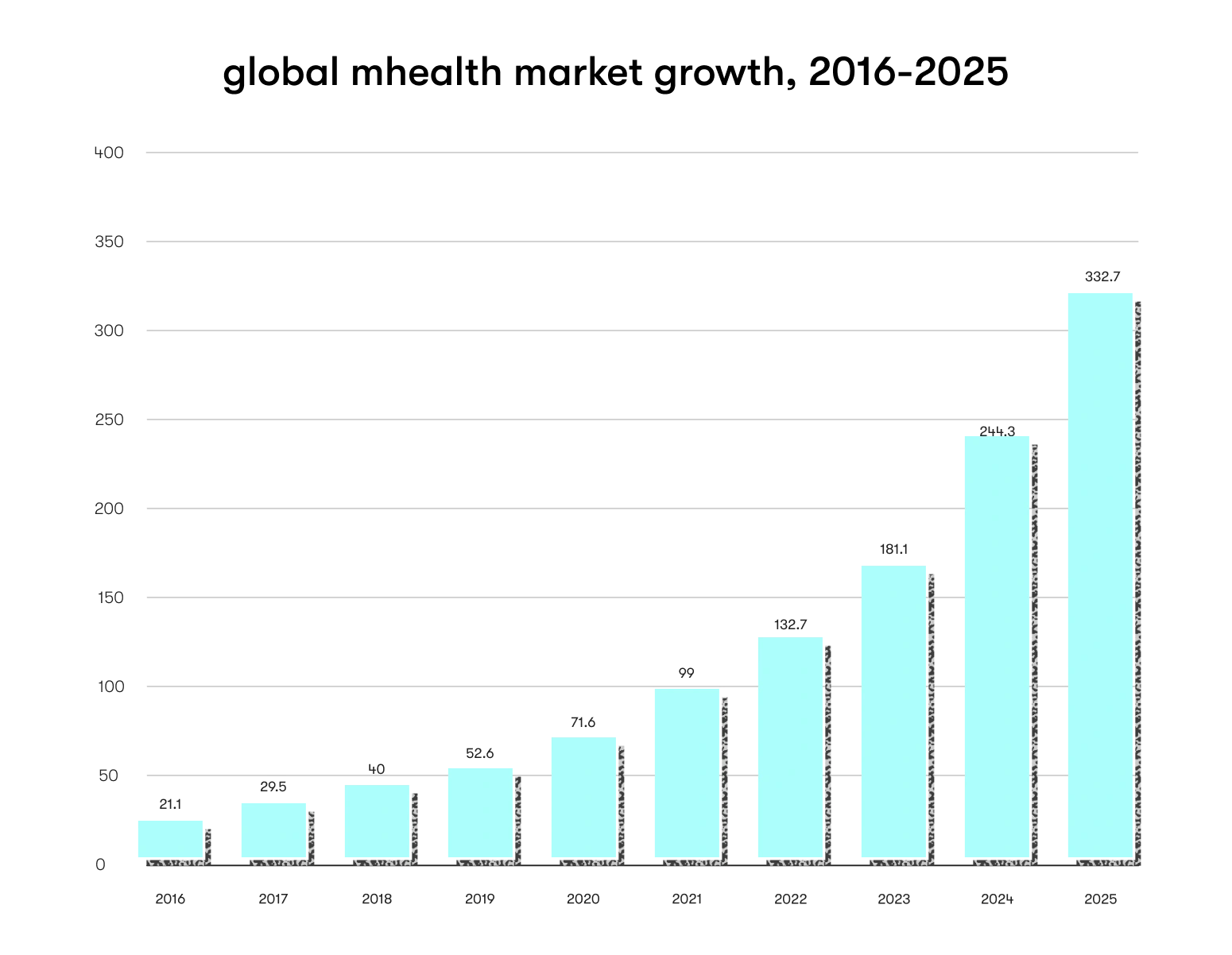
Another emerging trend is assuring interoperability across the country and even between different states like the European Union. Hospitals still often deal with legacy software that cannot be integrated with newer developments, making data storage, access, and transfer a lot more difficult. Standardization will help quickly access information from a variety of sources and allow more room for advanced analytics, machine learning, and artificial intelligence driven diagnostic solutions.
Types of Healthcare Applications
Healthcare applications drastically vary from type to type, which also impacts development. Some apps do not need to go through medical certification while applications for doctors, such as patient monitoring solutions, do require compliance. In this section, we will look at three main types of healthcare apps in more detail.
For Patients
Healthcare applications for patients encompass a large part of the market and include online counseling, therapy, pill management, telemedicine, fitness, yoga apps, hospital apps for patients, etc. For example, telemedicine application development makes it possible to connect patients with doctors and allows them to gain more control over their healthcare. This is especially important for people who live in remote areas with limited access to physical hospitals or patients with disabilities that cannot easily visit a doctor at any time. Telehealth solutions include video and audio calls, chats, and other forms of communication that cater to the needs of the patients.
For Providers
Healthcare providers like hospitals and clinics require advanced diagnostic systems that reduce the number of erroneous diagnoses and treatment plans. Using technology like machine learning, such solutions can help physicians make data-driven decisions and identify patterns. Hospitals also need medical team management apps that help them organize their work most efficiently. Scheduling in the medical sphere can get complicated due to long shifts and emergencies, and a management solution helps simplify this process for hospital managers. Finally, electronic health records have become commonplace in many countries and continue to deliver better results.
For Doctors
Applications that cater to doctors are vast and include educational platforms, networking apps, medical calculators, patient monitoring apps, etc. For example, educational apps can deliver new research and studies to help doctors stay up-to-date. They also offer pill identifiers, dosage calculators, and databases of all medical conditions with relevant information. Another helpful solution for physicians is medical networking platforms where they can cooperate with other doctors, compare salaries, and get educated.
Scale your software development team with EPAM Startups & SMBs
Top 5 Medical App Types 2024
Starting your own healthcare mobile app development is a huge undertaking, and this section will help you understand the different types of medical apps you can launch.
Patient monitoring
Remote patient monitoring applications allow physicians to track their patients’ vital signs, heart rate, pulse, cholesterol levels, and other parameters that might affect their condition. Using IoT devices and machine learning techniques, doctors can receive real-time patient health data and recognize abnormalities in their condition. As a result, physicians have vast amounts of information and utilize algorithms to increase the accuracy of their diagnostics.
Mental Health
If you would like to develop a health app that helps people gain access to mental professionals, you can opt for a mental health application. Solutions like Better Help connect patients to licensed therapists and psychiatrists and have online sessions. Doctors benefit from extra work and patients, whereas users get instant mental support at any time.
Appointments
Getting an appointment at the doctor’s office used to require a phone call or email, which might be inconvenient to many people. Appointments also then need to be manually entered into the system, which always raises the risk of human error. Such applications allow physicians to optimize their scheduling and help users swiftly make an appointment with any medical professional in their location.
Prescriptions
Especially patients with chronic conditions have to visit the hospital regularly to receive a new prescription. This places a burden on the patient who needs to take time out of their day to make the trip as well as on the doctor who needs to see the patient and write the prescription. Such solutions can automatically issue a new prescription when required and send it to the patient or pharmacy.
Drug management
Treatment plans often do not work because patients forget to take their medicine or exercise. This jeopardizes the entire process and decreases the chances of a successful recovery. Drug management apps remind users to take their pills, do a required exercise, refill their prescription or visit the doctor.
CREATE YOUR TOP FINTECH APP WITH US
Hire middle and senior fintech software developers in weeks, not months
Top 5 Examples of Successful Health Apps
If you want to create a medical app that offers a competitive edge and attracts users, you need to learn about the existing products. In this part, we will discuss the top 10 most successful health apps and learn about unique selling propositions.
Medisafe Pill Reminder
- 7 million users across iOS and Android;
- Ratings: 4.6 on Android and 4.7 on iOS;
- Medisafe's total funding is $51.5 million.
Medisafe Pill Reminder is the number one application for personal health and medication management. Users can set alarms to take their medication on time, handle all doctor appointments and track their health measurements for various conditions, including diabetes, cancer, depression, MS, HIV and others. The reminders are fully customizable and help patients keep track of their appointments and prescription drug refills. The functionality can also be shared with family members and caregivers to help patients’ close ones stay up-to-date with the state of their health.
Teladoc
- 43 million users across Android and iOS;
- Ratings: 4.3 on Android and 4.8 on iOS;
- Teladoc raised funds in the amount of $172.9 million.
Teladoc is a major digital health platform that connects patients to certified physicians. Users can set up an account and contact a professional in any medical sphere, including dermatology, general practitioners, therapists and others. The process is easy and quick and allows patients to receive immediate help whenever they need it. Teladoc can also facilitate medical advice in case of serious conditions and help patients find an in-person physician in their location.
Better Help
- 80,000 users across the platforms;
- Ratings: 4.6 on Android and 4.8 on iOS;
- In 2021, Better Help generated $700 million in revenue.
Better Help is an online therapy platform that helps patients find mental health experts. Users can choose a method of communication that suits them the most: messaging, chat, audio, and video calls. The platform will find a specialist with expertise in a particular area like depression, anxiety, etc., and connect the patient to them. As a result, the app provides high-quality mental health services at reasonable prices.
First Derm
- 400,000 users across platforms;
- Ratings: 3.3 on Android and 3.9 on iOS;
- First Derm received $461,600 in funding.
First Derm is another specialized health app that offers patients dermatology services. Users simply take a photo of their skin condition, describe the symptoms, and send it through the app. Within 24 hours, they receive a comprehensive report about their condition with recommendations about over-the-counter treatment options. If the condition is more serious, they will be referred to a specialist for an in-person appointment.
ZocDoc
- 6 million users on Android and iOS;
- Ratings: 4.3 on Android and 4.6 on iOS;
- ZocDoc’s total funding is $375.9 million.
ZocDoc is a platform that helps patients in the US to find specialists in their location who accept their insurance. Users can simply enter their condition or required procedure, location and insurance carrier, and the platform will output a list of physicians that can help them. Doctors can add themselves to the database by filling out a form on their website and reaching new patients.
Read also: How to Start a Healthcare Startup
Top 5 Benefits of Building a Health App
Healthcare applications can benefit both physicians and patients in many ways. In this part, we will focus on concrete advantages that they can gain from using medical solutions.
For Patients
Faster access to providers and care: The most significant benefit patients can get from mHealth is immediate and fast access to healthcare providers. Thanks to telemedicine, patients no longer need to spend time and money on traveling to the doctor’s office, waiting in line, and getting stuck in traffic. Using their phone, tablet, or laptop, patients can swiftly get in touch with any medical professional and receive the much-needed assistance. This is especially valuable for patients from remote areas or people with different disabilities.
Improved medication adherence: Upon leaving the hospital, people sometimes neglect their treatment plans for many reasons such as busy work schedule, family matters, etc. Apps like Pill Reminder help patients adhere to their medication plans and refill their prescriptions in time.
Enhanced communication and coordination: mHealth offers vast possibilities to clinicians to provide a better healthcare user experience. Access to electronic health records, video consultations, medication management, remote patient monitoring, and other features allow doctors to establish a smooth communication channel with their patients.
Encourages a healthy lifestyle: Modern life keeps us busy, which makes it harder to sustain a healthy lifestyle which can be vital, especially for people with certain conditions. Wellness applications often offer a gamification feature that encourages them to take on new challenges like exercises, diets, vitamins, etc.
Reduced costs: Software solutions like ZocDoc and GoodRx help patients discover affordable healthcare in their location. Medical services can be highly expensive, which leaves millions of people without appropriate attention. Many solutions can solve this problem by providing a more affordable virtual alternative.
For Doctors
Improved patient engagement: Given access to their treatment plans, medical information and health records, patients can be more engaged. Applications offer a personalized and customized experience that allows people to quickly change their appointments, enable certain notifications, and monitor their vital signs. When patients are more responsible about taking their medications and following up on their test results, this increases the chances of a successful treatment process which is always a win for physicians.
Minimize risks of misdiagnosis: Any manual work is prone to human errors. Electronic health records help doctors automate certain mundane processes and offer them instantaneous access to patient data. On top of that, AI-driven solutions unlock patterns and abnormalities, which help physicians make more accurate diagnoses.
Optimized payment processes: Mobile solutions shift the responsibility for payment processes from medical staff to apps. Now patients can quickly pay their medical bills using highly secured payment gateways of their choice.
Improved prescription and appointment alerts: Notifications help patients manage their appointments, reducing no-shows and allowing doctors to be more efficient. At the same time, this eliminates a big chunk of administrative work and saves operational costs.
Enhanced data management: Healthcare organizations handle vast amounts of patient data that needs to be protected, properly stored, and analyzed. Modern EHR systems allow medical staff to automatically record valuable information and ensure full compliance with HIPAA.
Scale your software development team with EPAM Startups & SMBs
The Elephant in the Room: Challenges of Developing a Health App
The healthcare application development process is lengthy, complex, and expensive, so we have prepared a list of pitfalls. If you would like to make a medical app efficiently, keep reading to learn how to avoid the pitfalls.
Finding the right niche
Above, we have listed many health app ideas that you can choose to start your app. Depending on your interests, ambitions, and budget, choose a niche you are comfortable with and learn the ins and outs of that market. Research the competition to find a possible gap to fill and identify your unique selling proposition.
Choosing development technology
When choosing a technology stack, it is crucial to distinguish between native and cross-platform app development. Native development implies building a separate app for iOS and Android, whereas cross-platform development delivers a single codebase that can be deployed to both operating systems. Cross-platform app development is usually cheaper but can deliver poorer performance and UI. Native app development is a more expensive and lengthy process but often provides higher speed and design.
To build an iOS medical app, you can use Swift, a programming language known for its simplicity, security, and interoperability with Objective-C. A healthcare Android app can be developed using Kotlin, a reliable and high-performance language with a wide community of support. Popular technology choices for cross-platform application development are React Native, Xamarin, and Flutter.
When choosing a development technology, consider getting in touch with a trustworthy healthcare IT consultant. They will provide more technical details about the costs and staff availability for the chosen tech stack.
HIPAA compliance
The Health Insurance Portability and Accountability Act (HIPAA) is a data privacy law that ensures that healthcare organizations properly handle and store patient information. It regulates Public Health Information (PHI) that holds every aspect of patient data. If you want to develop a HIPAA-compliant solution, it needs to operate according to the PHI guidelines.
Here is a short guide to how to develop a healthcare app that adheres to HIPAA regulations:
- Find an expert
If you lack expertise in this topic, it is recommended to employ an expert that will guide you through the processes and ensure full compliance.
- Evaluate patient data
Make sure you only collect the data that is necessary for your business. Further, identify the data that qualifies as PHI and store all the PHI information that needs to be preserved.
- Encrypt your data
To avoid privacy and security breaches and data leaks, use best practices to encrypt patient data and keep it safe.
- Test your app for data security
Run tests on your application after every update. Make sure to include experts to ensure the documentation is relevant and tests are correctly performed.
Other privacy laws
Depending on the location of your target audience, you might also need to comply with the data privacy laws of other countries. For example, if you operate in the EU, you must comply with GDPR; in the UK, you need DPA, and in Canada, PIPEDA. Research the privacy laws and regulations in the target location and adhere to them to avoid financial and legal restitution.
Multiple devices and channels
Plan the required ecosystem of mobile devices in advance and consider whether your app will be likely used on a smartphone, tablet, laptop, PC, or wearables. For example, for quick access to information, users mostly prefer smartphones, whereas, for more in-depth research, they will probably use a tablet or laptop.
Thorough testing
Healthcare apps need rigorous testing like no other mobile solutions. These applications hold sensitive patient data, including financial information, and exposing it to people with bad intentions can lead to serious problems. Launching a solution without sufficient testing can cost you your reputation and put heavy monetary burdens on your company.
Accessibility and inclusivity in design
Inclusivity has been an emerging trend in multiple app development ventures, but it has a different meaning for the healthcare industry. These apps are more likely to be used by people with disabilities that require additional assistance. Make sure your product is accessible to people with various impairments and disabilities.
Compatibility with legacy medical systems
Most hospitals still deal with outdated legacy software that cannot be easily integrated with new technology. If you plan to target your services to healthcare providers and physicians, take these legacy systems into consideration.
MVP Features of a Medical App to launch and Succeed
An MVP stands for minimum viable product and serves as a concept validation. Companies design and develop MVPs to test their idea without spending too many resources, collect some feedback and rethink their concept for further iterations. In this section, we will discuss the essential features that a health app MVP requires.
Registration and login
The registration process allows users to enter their personal and PHI information to set up a profile. Make sure this step is secure and ensures top-notch data protection, including two-factor authentication and data encryption.
Search and filter
Users should be able to search for a specific medical expert or hospital using your application. Filter options enable a more refined search and include specifics like location, insurance provider, area of expertise, price range, etc.
Appointment scheduling
Set up an easy-to-use appointment scheduling system that helps both patients and doctors manage their calendars. Offer users available slots that they can choose, followed by a confirmation from the doctor.
Reminders and notifications
Especially for apps that manage appointments and medication, make sure users can enable and customize notifications.
Doctor-patient communication options
Patients might have different preferences regarding communication, including messaging, chats, audio calls, and video consultations. It’s critical to ensure the safety of these communication channels as they might involve confidential information that cannot be leaked.
Access to medical records (EHR)
Secure storing and sharing options for electronic health records is another essential feature of any medical app. Create a health app that allows both patients and physicians to access these files when needed.
Activity dashboards
Dashboards provide a broad overview of the patient’s data and medical history. During their visit or online session, physicians can swiftly access the most important information without scrolling through the patient’s medical records.
Payment gateways
Offer several secure payment options to make your app accessible to a wide range of potential users. Include credit and debit card payments, Stripe, PayPal and other options based on what your target audience is likely to use.
CREATE YOUR TOP FINTECH APP WITH US
Hire middle and senior fintech software developers in weeks, not months
Advanced Features of a Healthcare App
After launching an MVP, collecting feedback, and moving to further steps, you can begin integrating more sophisticated features to help your solution stand out on the market.
Geolocation
Geolocation allows users to share their location with the app and immediately find physicians or healthcare organizations in their vicinity. At the same time, if a patient requires instant help, the app will disclose their location and they can receive medical assistance.
Feedback & reviews
This feature can help users find a medical professional that suits their preferences, values, and medical history. They can browse through reviews and choose an expert that is likely to help them the most. Using this feature, patients can also leave positive and negative reviews, thus promoting good doctors.
Symptom checker
Users can input information regarding their symptoms to discover the most accurate medical advice. Instead of using Google and reading questionable blog posts, users can take advantage of curated, up-to-date medical information delivered by professionals. This feature can also include AI chatbots that gather initial information and later refer the user to a specific physician.
Integration with wearables
IoT devices offer endless possibilities for the medical sphere and make diagnostics more precise and data-driven. Through wearables, users can monitor their health signs and also allow doctors to track their treatment plan and overall condition.
ePrescription
You can also develop a medical app that allows the generation of electronic prescriptions. They can be forwarded to the user or directly to the pharmacy, from where patients can pick up their medication.
Health education
Enable your users access to the recent medical education materials to learn more about their condition and the latest developments in the field. Physicians will require access to medical research and studies, whereas patients will probably benefit from general information and excerpts.
How Does a Medical Mobile Application Make Money?
Before you build a medical app, you need to consider your monetization options. There are a few ways you can monetize your application that we will briefly discuss in this part.
Freemium model
The freemium model comprises two versions of an app: a free version with basic features and functionalities, and a paid one that offers unlimited access to the app. To make this model work, offer a free trial for the premium version to let users get a peek at the product's advanced functionalities before paying money for it.
Subscription-based model
This model provides the app functionality for a subscription fee. You can offer different tiers and payment options such as weekly, monthly, or yearly fees.
In-app ads
Since we are talking about healthcare applications, you need to make sure the ads are relevant and not disruptive. In-app ads are commonplace for monetization, but they need to be health-related. For example, you can partner up with a pharmacy or fitness center.
In-app purchases
In-app purchases might encompass additional workouts for fitness apps or pre-pay visits for telemedicine solutions when it comes to health apps. Think about what you can sell that would be relevant to the user and generate a stream of income for you and integrate this into the app.
Monetizing data
If you would like to monetize user data, you need to make sure it’s completely anonymous. This data can be used in research and studies to predict trends and gain various insights.
8 Steps to Develop a Healthcare App
How do you build a healthcare app without major pitfalls? Here we will go through a step-by-step process of creating a healthcare app.
Step 1 – Do market analysis
Identify the niche you would like to penetrate and investigate the market to learn everything about the trends, the biggest players, target audience, and technologies. It can also be helpful to conduct a SWOT analysis to detect your strengths and opportunities and exploit them in the market.
Step 2 – Study your audience
You can conduct surveys and create personas to know your target audience and understand their pain points. The only way your product can be successful is by solving a specific problem that users have better than your competitors.
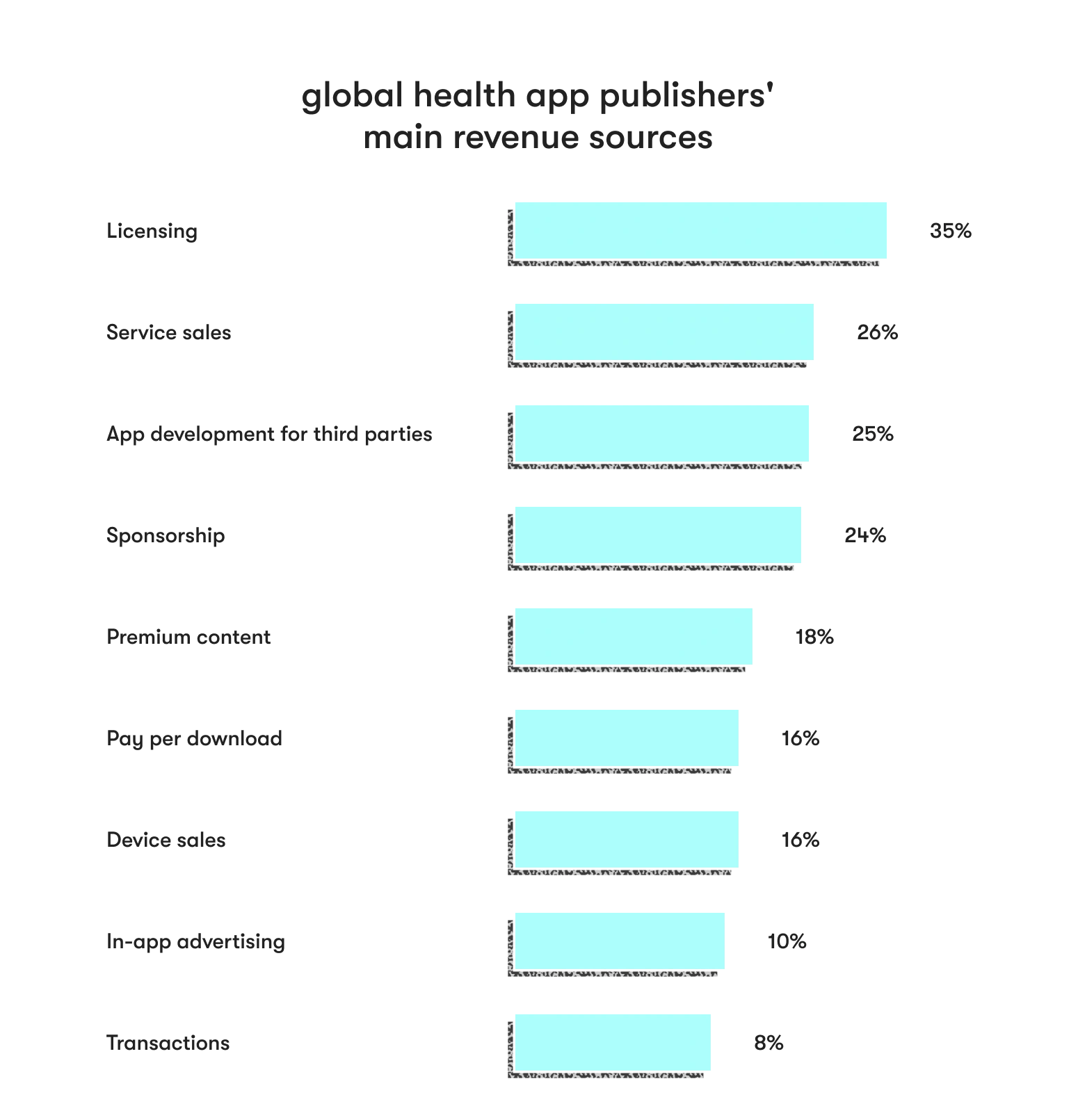
Step 3 – Choose an app type
Are you ready to build a health app that adheres to HIPAA standards? Then you have a lot of choices of application types: educational portals, telemedicine, symptom checkers, electronic prescriptions, and more. If you prefer to opt for something simpler, you can make a fitness or dieting app. Find characteristics and functionality that will help you stand out from the competition and draw attention to your product.
Step 4 – Create the design
Before rolling out a functioning MVP, work on a simple prototype that will help you gain the look and feel of the future app. Make sure your design is aesthetically appealing and offers clear and simple navigation. You should also focus on accessibility and inclusivity for people with visual impairments and other forms of disabilities.
Step 5 – Ensure HIPAA compliance
We have already discussed this in full, but it is worth mentioning that the costs of non-compliance with HIPAA are enormous. Make sure your app adheres to all the necessary regulations.
Step 6 – Build an MVP
Make a list of essential features and build an MVP with the basic functionality. In other words, your MVP should be able to solve the main problem, such as allowing people to make appointments or write prescriptions. You can extend the app functionality and include more advanced features in further iterations.
Step 7 – Conduct A/B tests and collect feedback
Launch your MVP to a small group of users and gather their feedback. Evaluate this feedback and utilize it to improve the app in the following development cycles.
Step 8 – Ongoing maintenance and support
Upon app release, ensure the ongoing tech support and maintenance, update the application, and deploy new features to stay on top of the competition.
How Much Does It Cost to Create a Medical App on Average?
Costs of mobile health application development vary depending on several factors. In this section, we will take a look at the average costs and offer tips on how to cut the expenses.
Development costs
According to Research2Guidance, the average costs of medical app development are $425,000. However, they can vary depending on the location, app complexity and technology stack. You can also save costs if you choose to work with a third-party agency rather than hire an in-house team. Costs of working with freelancers are usually lower as well, but there is a risk of receiving poor quality results.
There are also hidden costs that drive up the bill. For example, costs of content management tools and tech support. You should also consider the costs of hosting and servers as well as data storage and anonymizing. The extra spending will also come from regular app updates and feature releases as well as the app’s launch to the stores.
Scale your software development team with EPAM Startups & SMBs
Tips and tricks for saving
There are a few tips that can help you save money and not overextend your budget. For starters, building prototypes and launching an MVP are always good ways to cut costs. They allow you to validate the idea without starting a full-scale application development process. Additionally, you can lower the costs by hiring a team from Eastern Europe rather than the US. However, make sure the company is experienced and has an impressive portfolio that proves their expertise. Finally, you can hire a reliable outstaffing partner that will deliver you the professionals you need to make the project happen.
EPAM Startups & SMBs Projects in Building a Health App
We are a team of technical experts and your reliable outstaffing partner that has successfully delivered a variety of healthcare applications. As a cooperation platform, we're backed by EPAM — a global software engineering services provider.
Among other projects, EPAM developed RaySafe S1, a software solution for radiation dose management during X-ray procedures. The collaboration with the National Capital Poison Center (NCPC) resulted in a unified platform for poison emergencies. Finally, Memorial Sloan Kettering (MSK) together with EPAM developed an application for teenage and young adult cancer patients to find information and community.
CardioReady
EPAM has also worked with CardioReady to make a medical application that simplifies check-ups for cardiac patients. The company needed to enhance efficiency of maintenance checks and elevate the Automated External Defibrillators (AED) programs compliance with all enforced standards and laws. The cooperation resulted in two applications: Maintenance Minder and Inspector Mobile.
Key challenges
- Improve AED compliance;
- Deliver a compliance monitoring solution;
- Develop dashboards that display inspection results;
- Solutions testing.
What EPAM delivered
CardioReady Certification Center: A global dashboard that allows organizations to remotely monitor their compliance status in real-time and make sure they are up to date with all the standards.
Maintenance Minder: A mobile application that provides guidelines on how to conduct AED checks. The solution helps organizations to improve compliance and streamline the maintenance processes.
Inspector Mobile: An application that caters to AED inspectors and helps them simplify, organize and optimize site assessments. As a result, they became more efficient and thorough.
Conclusion
As you can see, the process of healthcare mobile application development is challenging. Juggling high budgets, HIPAA compliance, data security and the right tech stack can be stressful and put a burden on your team. If you would like to build a secure medical app and require technical help, EPAM Startups & SMBs is here to support you. We will help you identify the potential on the market, choose the right technology and offer you seasoned specialists that will deliver a high-performance application. Get in touch with us to discuss the details of your project and find the best talents to achieve your goals.
FAQ

Expert digital communicator and editor providing insights and research-based guides for technology buyers globally.
Expert digital communicator and editor providing insights and research-based guides for technology buyers globally.
Explore our Editorial Policy to learn more about our standards for content creation.
read more
